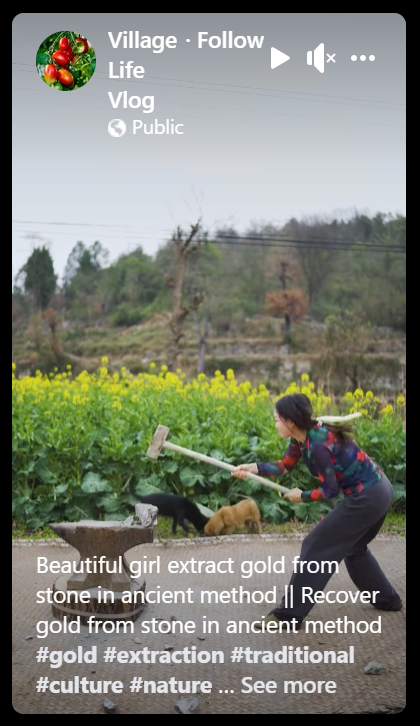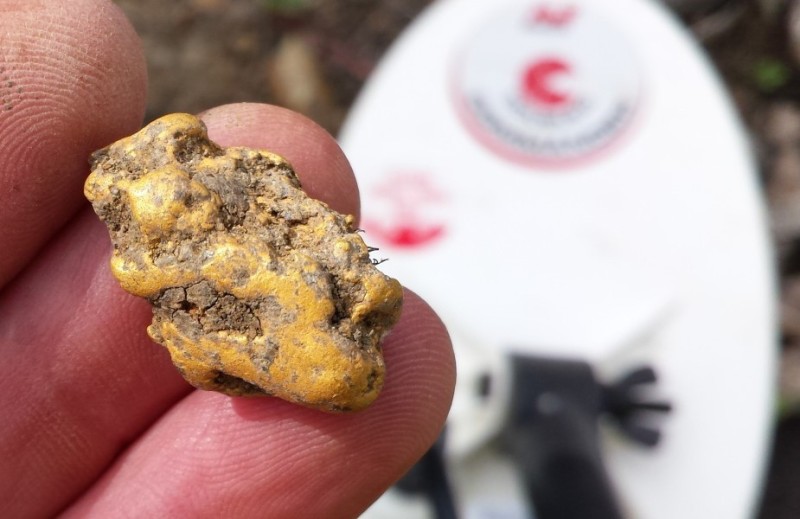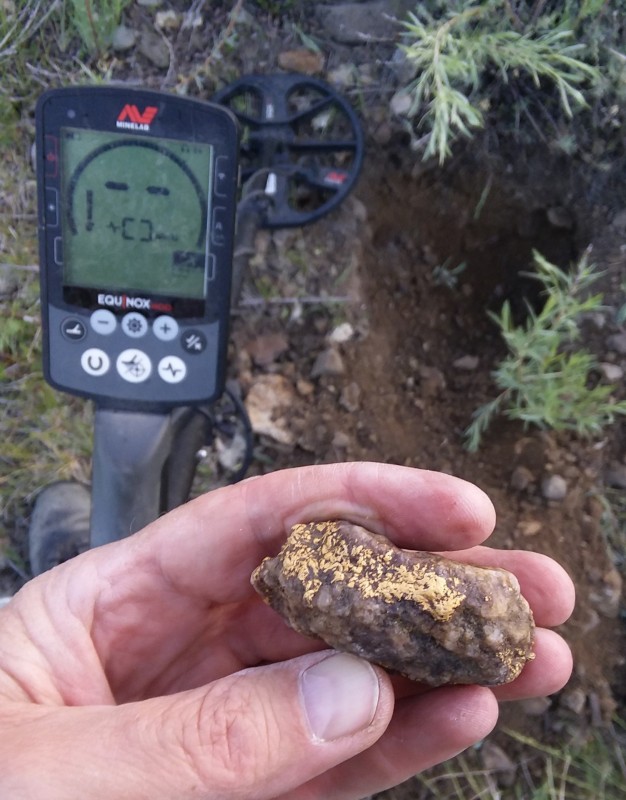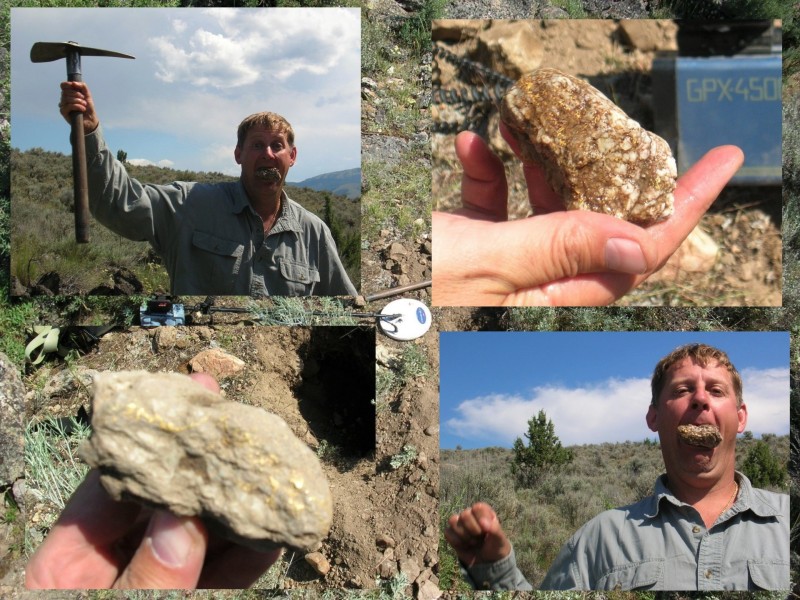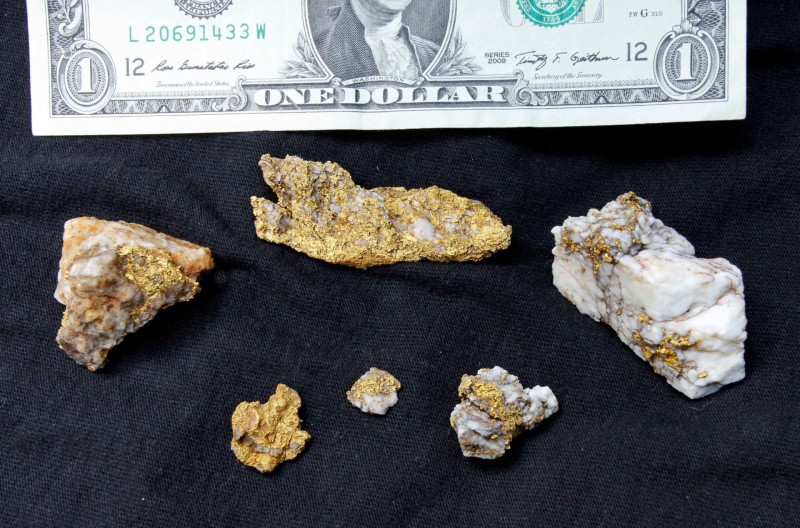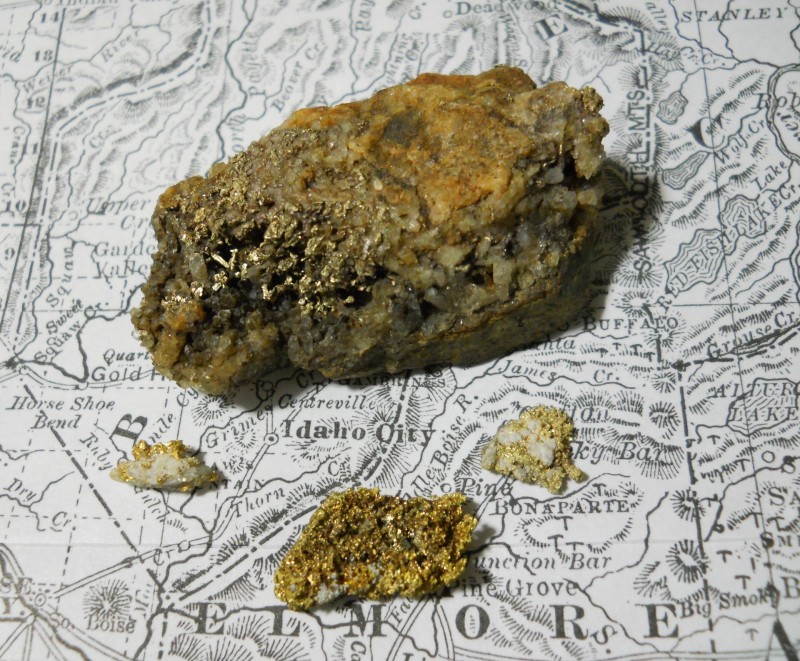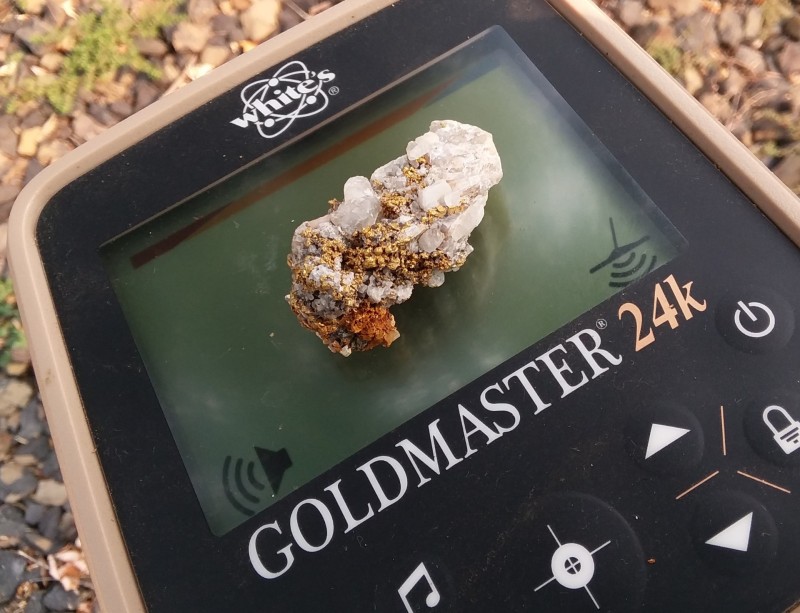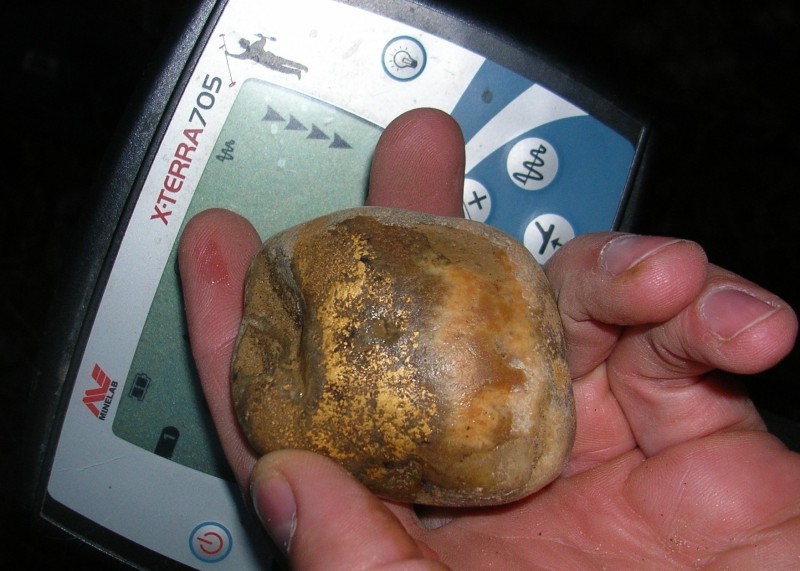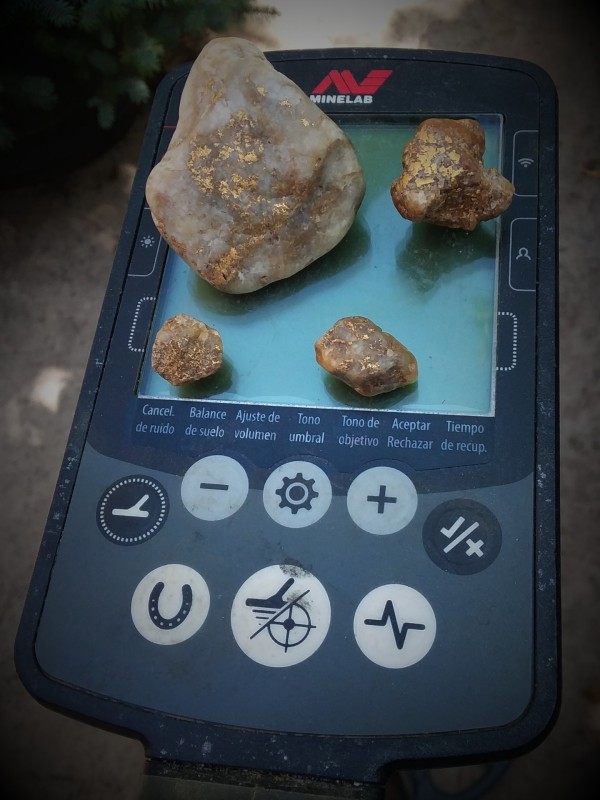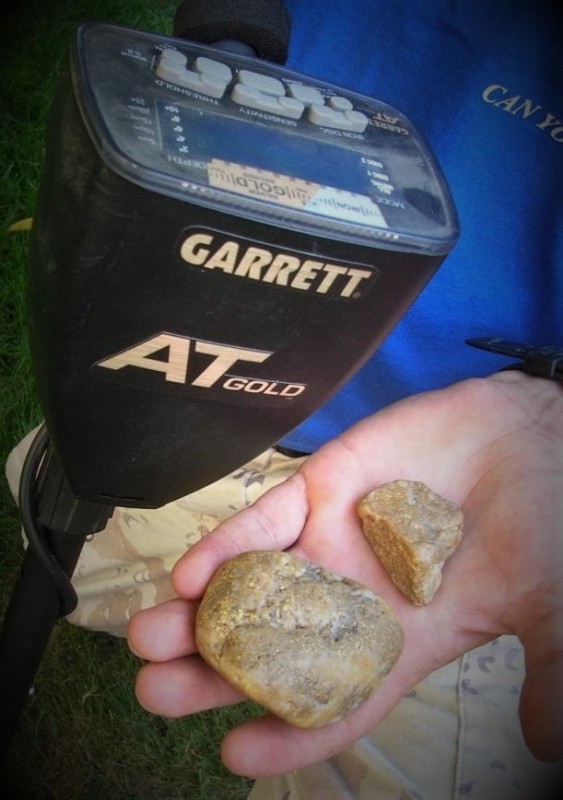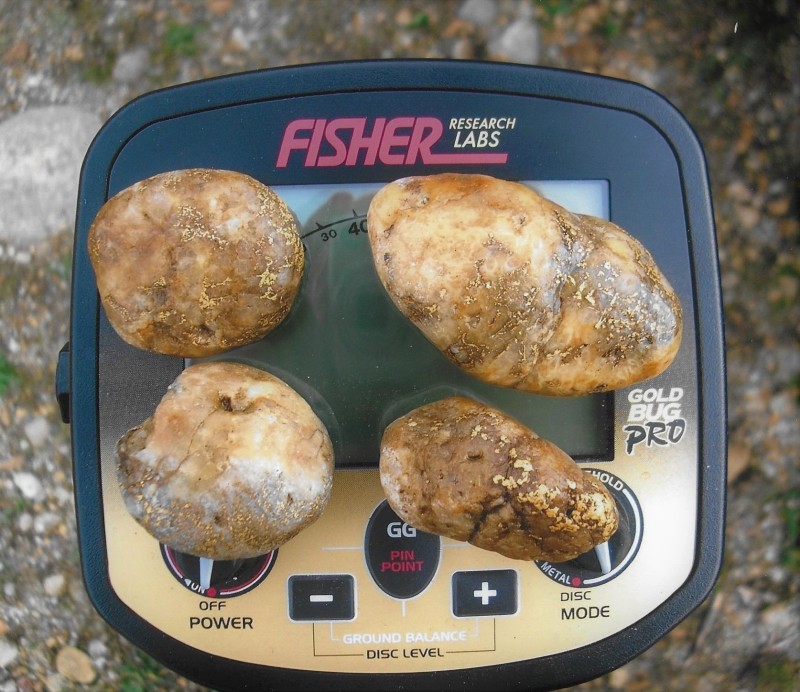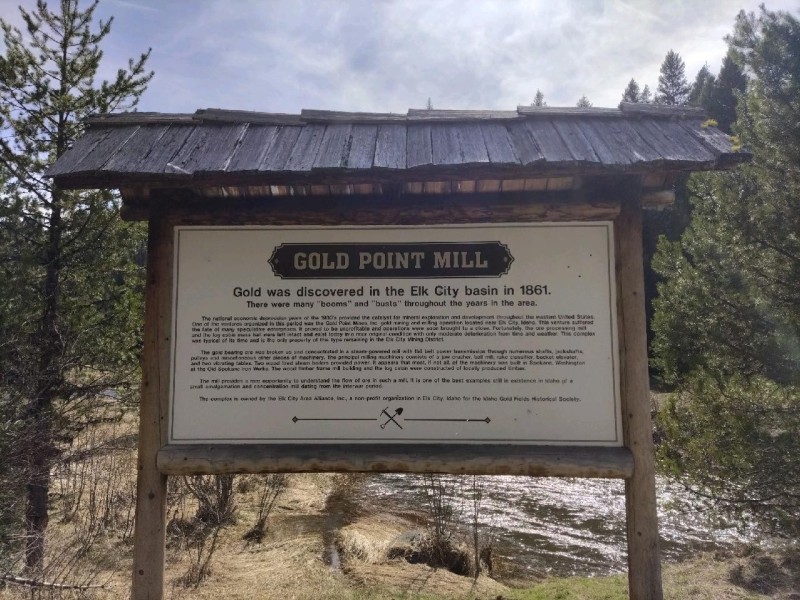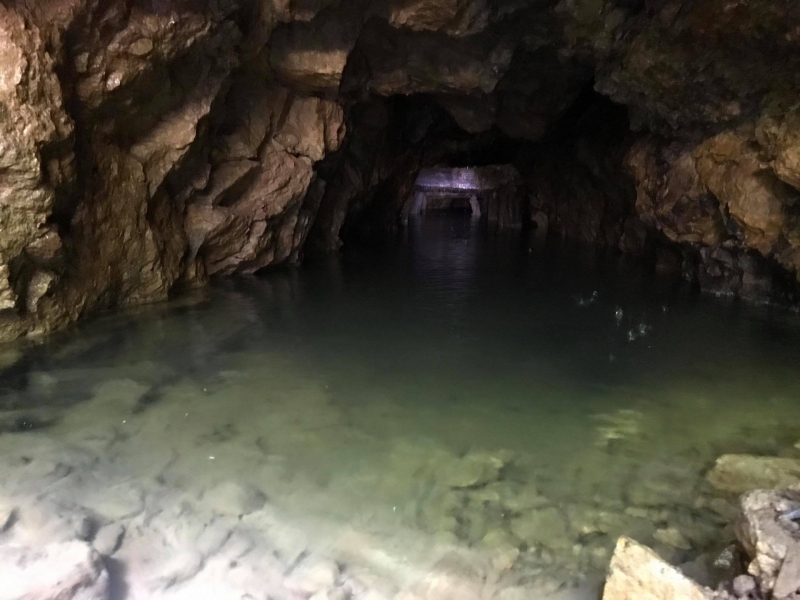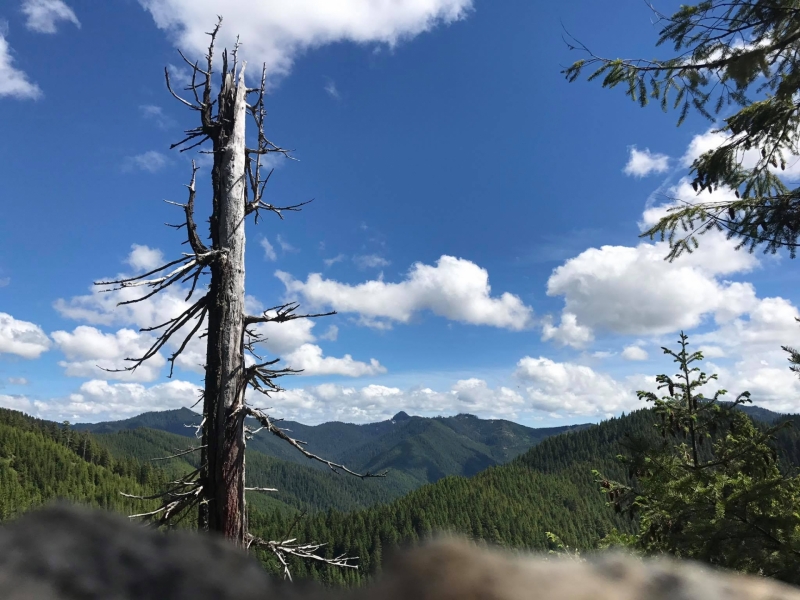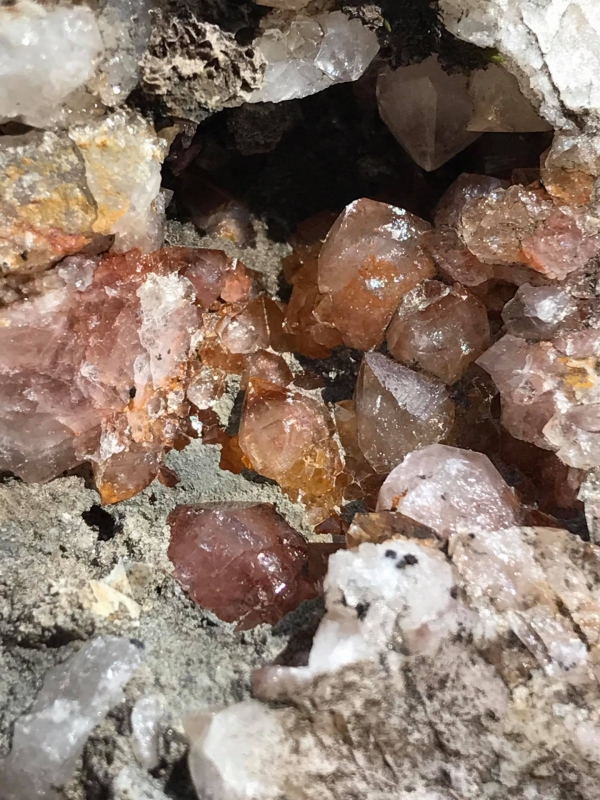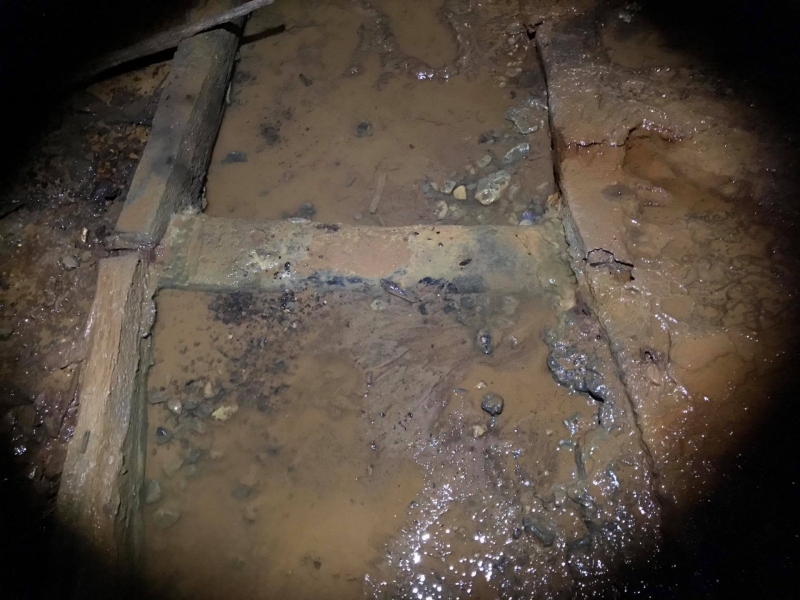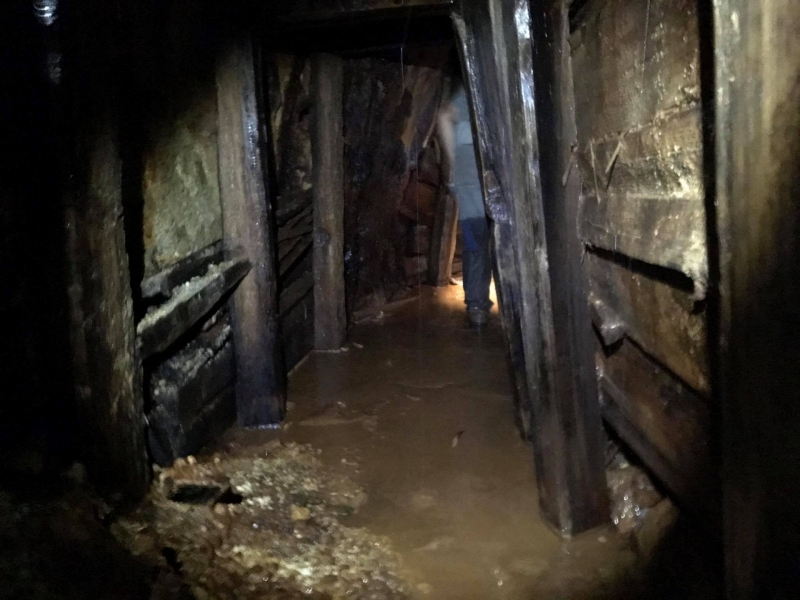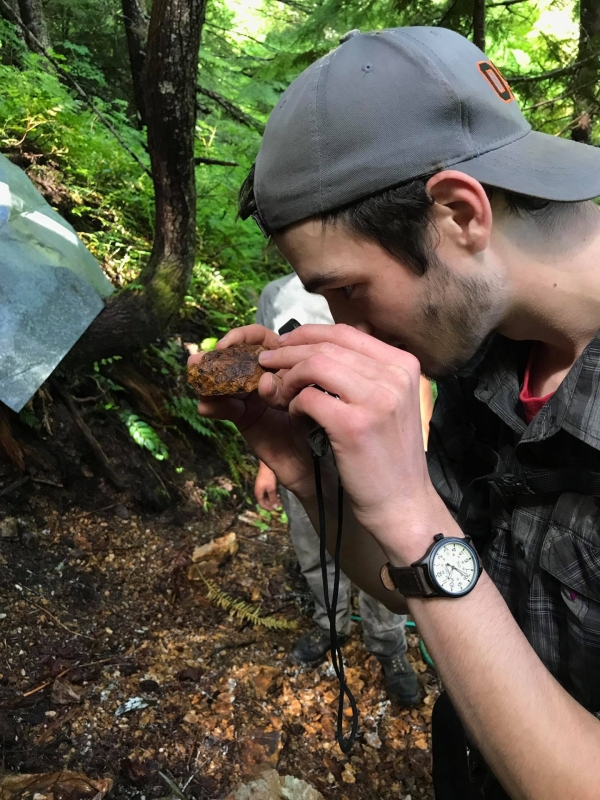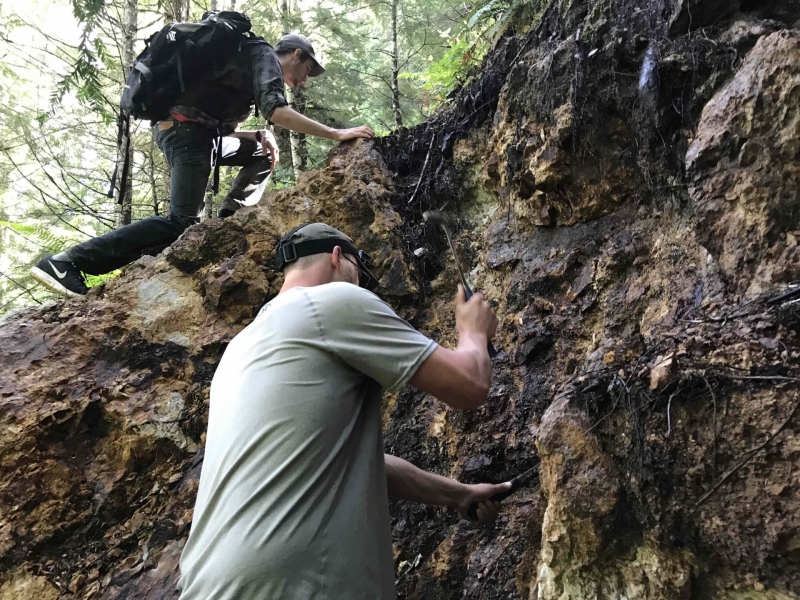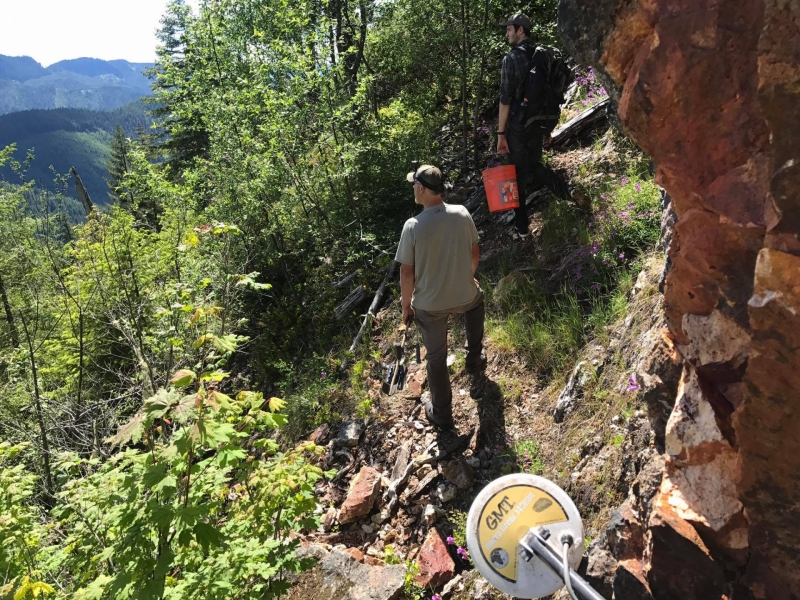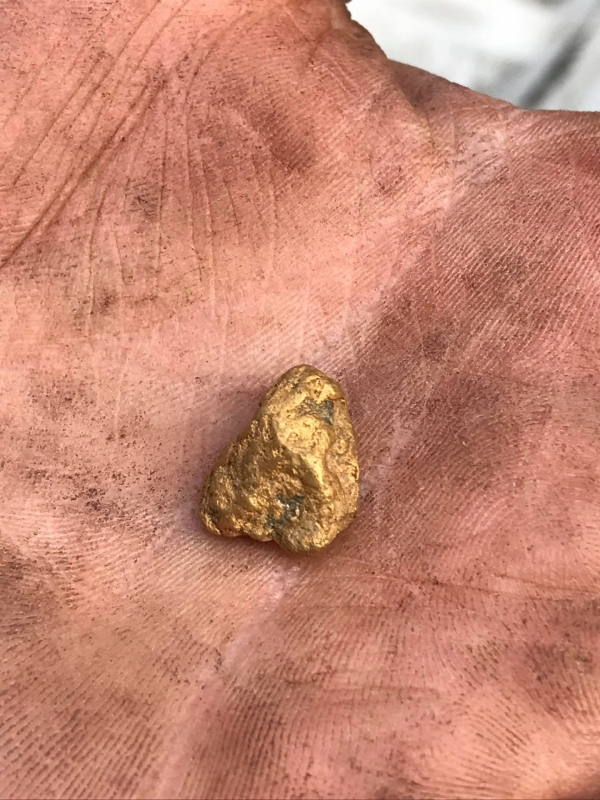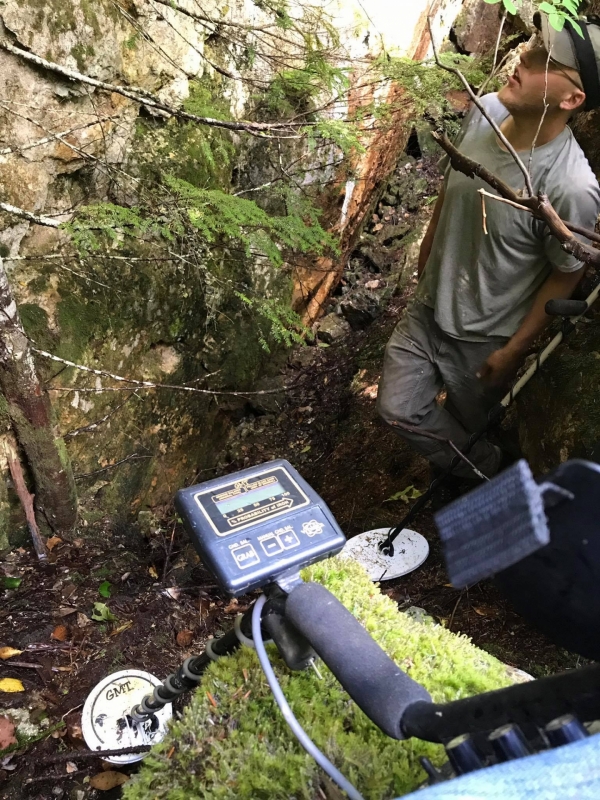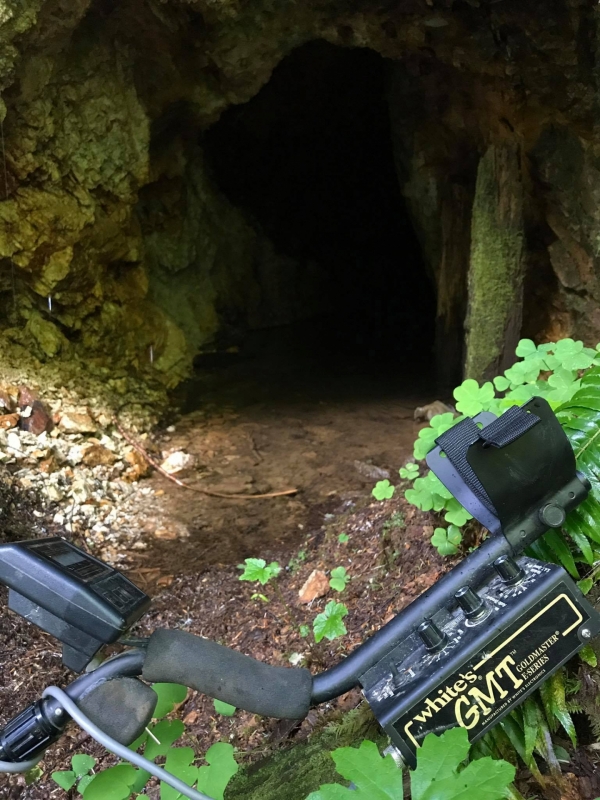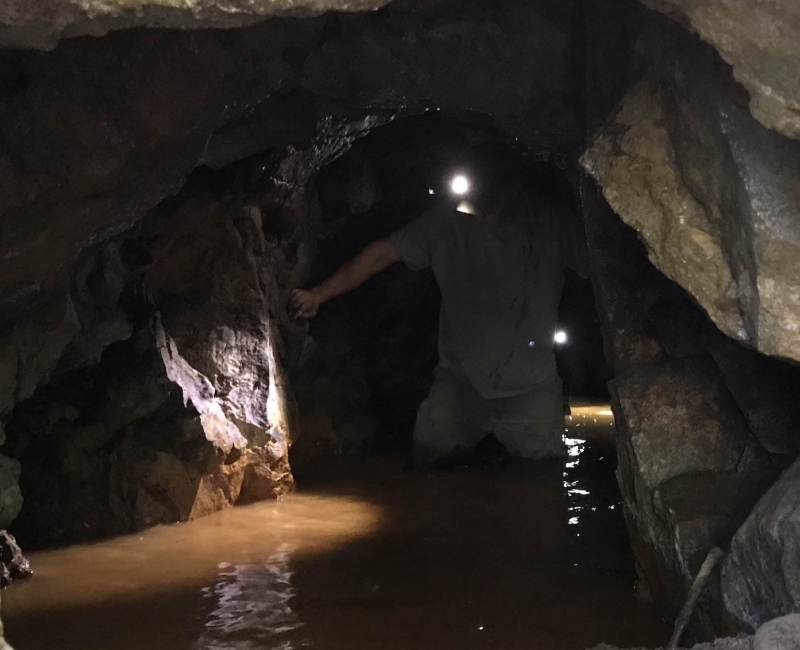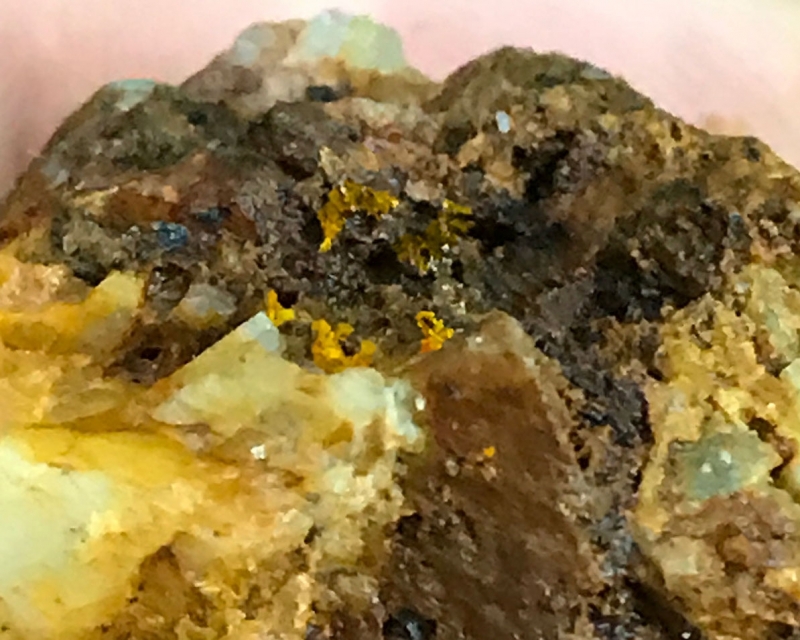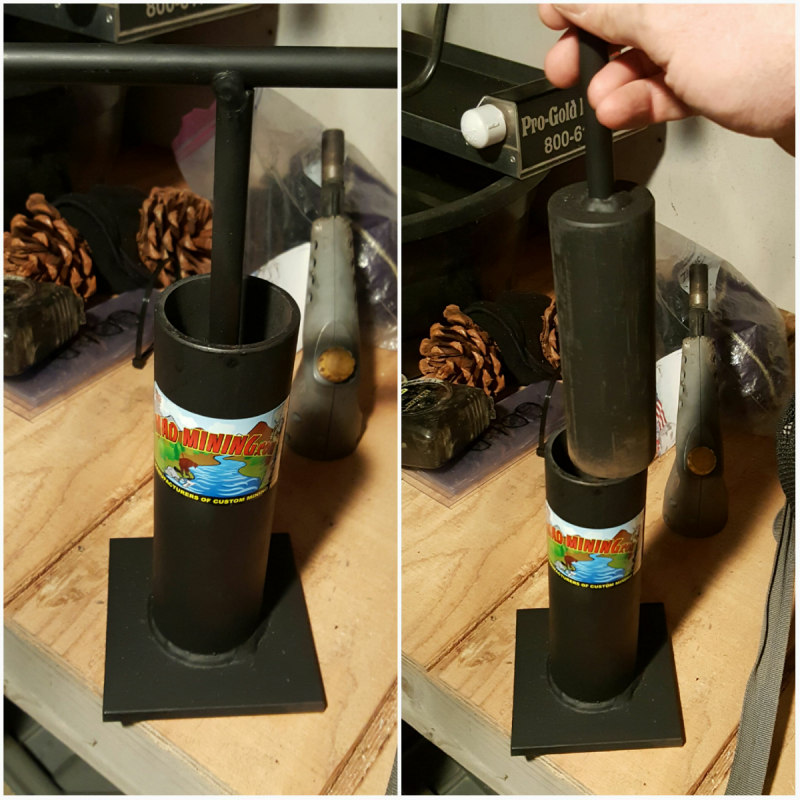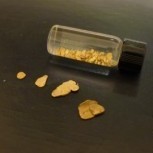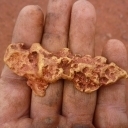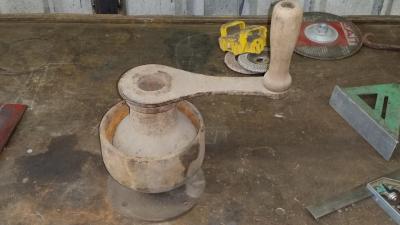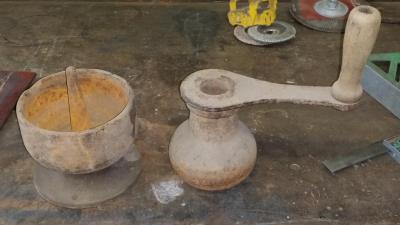Search the Community
Showing results for tags 'lode and hard rock'.
-
There has been a very neat story floating around about a little mine found in The Superstition Wilderness Area. This is a story that got no publicity until a writer and Lost Dutchman Mine Hunter named Jack San Felice wrote about it in a book a few years ago. Jack has always said he believes this mine was The Lost Dutchman. Very few details have ever been made public about the dig. The story goes, that the area was located in the 1950s but for whatever reason was not exploited for many years (as so many other incredible lost mine stories go). It was a pit mine that ran about 90 feet deep. It was smack dab in the middle of an area that had a bunch of working silver mines in the late 1800s. Because it was in the SWA (Superstition Wilderness Area), and closed to claim location since 1984, any exploitation had to be VERY secret. This mine was supposedly secretly worked during the Summer months of 1997-1999. They dug the mine from its original 90 foot depth to 300 feet deep. Most people thought it was just a silver mine like all the others in the area (Roger's Spring). Over the years, little tidbits have leaked out. Things like some of the people THOUGHT to be involved claiming they had found the Lost Dutchman. If true, that COMPLETELY discounts the silver mine idea (except we all know gold is often found in pockets in silver veins/mines). All a very interesting story, UNTIL a few days ago, when a picture started making the rounds: This cabbage ball sized chunk of rock that dreams are made of is claimed to be from this Pit Mine. Jacob Waltz claimed that his mine contained two veins of material: 1. 18 inch thick vein of white and rose quartz shot through with about 30% gold content. 2. 8 inch thick vein of gray volcanic tuff with visible gold that was very soft and could be scraped out with bare hands. You miners imagine how much money is involved if they dug 210 feet of ore like this in an 18 inch thick vein! Just a little something to get everybody's mouth watering! Enjoy - Mike
-
The great debate of DISCRIMINATION, Iron ID and Target #'s when detecting for Gold. The war of words is about to begin. So lets try to stay on point and be courteous of others ways/ideas or skill levels for those who are newer to the game. This is an open end post and all who respond, reply, ask questions, disagree and or partially agree is 100% totally fine and discussion desired. So many times I’ve heard from the Experts who detect for gold, they say “Dig It All” and to never used Discrimination. So I guess there really is no debate? Just do what the Experts do and live with the results. Is that such like good advice from so called Experts. So if this is the case, then why do the detector manufactures offer it (discrimination or ID) on their machines? VLF Gold type detectors have had Iron Identification on some models since the 1980’s and I also know earlier General Purpose detectors offered DISC as far back to the early 70s. I imagine those of you who have been around for longer than I could even know of detectors with such capabilities go back before the dates I mentioned? Heck, even Minelab Pulse Induction detectors in the 1990’s provided Iron DISC feature. So are all those manufactures and variety of detector models, just selling us bells and whistles? Remember what so called Expert says, “dig it all”. The manufactures have to know something? Maybe there are times and or locations that Discrimination and or Iron ID is indeed a needed feature? Maybe the models with such are for dummies who know nothing as they have never spoken with an Expert? Could said Expert who does this for a living be wrong? Well most certainly not in his mind anyway. I’m going to give you my reasons why I end using detectors with the Iron ID or Discrimination features and I’ll even go into detail of using both the traditional VLF’s and the more robust Pulse Induction power detectors. I’m not an Expert and I do not do this for a living (well I do not hunt gold for a living), but I do sell detectors as my full time job. So since I’m not an Official Full Time Prospecting Expert, does that mean the knowledge I have of various detectors not count? That is to be debated down the road. I will say this though and those who know me for many years know I can back up my words with the amount of gold and the sizes of gold I have recovered. 1st off, when you are out there detecting, I want you to do what you are most comfortable with and what has provided you success on previous trips. I’m not here to make you change your ways. In fact, those of you who are just as happy with your results and not using DISC., I totally understand you are not about to change your ways. That’s totally fine with me…I’m happy for you. It’s the rest of the folks who are newer to the game of Electronic Prospecting for gold and or even those who are experienced hunters that have decent success…but you are wise enough to realize at times ..just maybe there is a better way at doing it? This article is for those folks. The average guy who goes detecting a few times at the same locations with a little jingle in the pouch. Your success at those sites tell, you’re doing it correctly so you’re quite pleased, happy and not willing to change your ways of thinking or doing things. I’m fine and happy for you. But, sorry that is not me. I’m all about Adventure and Travel with detectors in hand. I enjoy new detector technologies and trying to find ways to make them perform better for the task. I like gold and the varieties of gold I pursue is quite varied when compared to many other folks who chase it. I don’t know if it’s because of my knowledge and skill level of gold detecting or just that others are stuck in a pattern and don’t know any difference? My travels in pursuit of gold have guided me to more states than most (NV, OR, ID, MT, SD, WY, AZ, AK) 8 to be exact and 2 different countries (Australia and Mexico). I’m not counting gold jewelry and coins/artifacts (my list would be much larger), just natural Au gold in it’s raw form. All the states and countries I mentioned, I have had success with my metal detectors. In fact, I have yet to hunt a state and not find gold with a detector. CA, CO and UT will eventually get checked off my list. OK, back to the Discrimination/Iron ID discussion and why I want it on my detector tools. Why I feel DISC and Iron ID are of desired features on a metal detector and there are many times when they need to be used. Those features save me time and energy. Both Time and Energy are something I desire more and more each year and seem to get less and less of. A detector with the features of DISC and Iron ID can save me Time and Energy when digging. When I use a detector with such features, I get to SELECT the amount of targets I want to dig. Here is a typical situation I experience many times in my hunts. I hunt gold where gold has been found and I like to detect in such sites. Here are the main sites I prefer to hunt and use DISC and or ID machine. Old hand placer workings, Ore dump piles, and Dredge Trailing Piles. These golden grounds were proven producers at one time and they leave plenty of targets for us. Old hand placer workings (6 pics below of Au digs using PI DD coils with DISC or VLF's with VDI Readout) In OR, NV, ID, MT, and SD. The problem is most of the targets are trash and many of the trash items are man made iron. My DISC and Iron ID capable detectors save me time/energy in these gold rich locations. Using common math to show. How many times will that person dig in an hour? How many hours a day will that person hunt? How many days on that trip will they swing the detector and dig targets? Let’s say a person can dig 10 targets an hour and 6 hrs a day = 60 targets for the day. On average, average site produces 15 non ferrous targets and 45 iron targets. So of the 15 non ferrous targets, lets say 20% are gold (3 pieces of gold) of the 15 nonferrous targets and of the total 60 digs. In Eastern Oregon those numbers are pretty close. Here is where I like the ID. I can save Time and Energy by not having to dig 45 iron targets. I now am digging more non ferrous targets than the average guy so my gold count goes up. Say I saved T&E on those 45 iron targets so I still get the 15 Nonferrous, but the extra T&E allows me to dig 15 to 25 (not 45) more targets that are Nonferrous. I’ll be extremely on the cautionary side and say I only dug 15 more NF targets. That ends up 2X my gold count for the day and also still saved me T&E. Plus as well all know, the extra boost of finding more gold seems to earn me a little more Energy. Ore Dump/Hardrock Piles- (5 pics of success using VLF's & their Identification systems) Many areas I hunt in NV, ID, MT, OR and I’ve seen many in AZ have such hard rock ore dumps. Do you know the preferred detector for this kind of gold? Do you know if you take a target identification VLF and use it at such sites, you can recover more desired nonferrous targets. I select only certain VLF type detectors for these sites. Iron ID is nice and if that is all I have then most certainly, I use it. But I know (from previous testing) that certainly VLF gold capable detectors can go a step farther and provide me with even greater odds of Success at gold and saving me T & E. Dredge Tailing Piles – (8 pics of gold using VLF's & their ID features) Love hunting these locations and my success in Tailing Piles of ID, OR, AK, NV is golden. Some of my largest gold recoveries are from such piles and the funny part is most all of them were recovered with VLF detectors using Iron Discrimination. Why you ask? Because in dredge tailing piles, even a VLF detector can pick up a rail tie spike at 12” down. Even a VLF can hear a rusty prospectors tobacco tin or smashed sardine can at near a foot and a half deep. Even a VLF detector can hear at depths of 2 feet down for a rusty grease bucket or lid to a 55 gallon drum. How about the 55 gal drum itself…well I know for a fact some VLF detectors will respond pushing near 4 feet down. Are you man enough to dig those monster holes in loose rocks and gravel? If you have never attempted it, good luck. The material you are digging keeps caving in as you go down and the next thing you know…after 45 minutes, you have a 4 foot wide and 3 foot deep hole. Only another foot more to go. Oh those days…can kill an old mans ego for the whole trips…I’ve seen it happen. As you can see from the Success pictures, the ability to use Iron ID on Pulse Induction & VLF detectors has proved golden. Now, taking today's newer Identification ID machines a step further saves me much time on pursuing only the best and most probably signals to dig. No, there’s no magic to it, but I’ve learned a lot more than most about different kinds of gold and how it reads on these ID machines. So many of the sites I currently hunt, the bigger solid nuggets are gone and have been for 10+ yrs. But there’s still some of that specimen stuff the older technologies missed. Sites I enjoy detecting are the trash areas most others try for an hour or 2 and then they walk away is discuss. They’re tired of digging holes and finding iron nails, boot tacks and shovel heads. Sure, I dig a few of those shovel heads, but not as many as most others do. I’ve spent the time in the field and learned. I’ve purchased most of the newer technologies and tested/compared each to see how they stand. No one detector does it all, but I know this. I quality PI and a new technology VLF sure does cover most bases. After all, I can tell you with fact, that the last 5 yrs, my gold finds are better than most and the majority were recovered using my techniques in the locations I mentioned. It’s hard to beat what works and puts the gold in the safe. Knowing where and how varying gold finds register on your VLF detector is crucial. Here’s an example of what most folks encounter when in the field at an old gold producing site. Ore dump piles, are full of rail tie spikes and blasting caps. Also seems to be a beacon for lead bullets of a variety, but usually .22 and 9MM slugs. Many of my gold recoveries from these sites, the newest of VLF gold detectors can ID the difference between such targets. Also, the majority of gold specimens in a certain pile, seems to ID the same #’s or very close to it. Yes it does take practice and time to learn, but in the end, you have knowledge to be selective and save time/energy. Hand working placer digs has a bigger variety of trash items and one some of my locations, the gold is thicker, more dense and reads different. I usually use VLF ID’s to help identify and ignore the high conductor targets while concentrating on the lower ones. Most gold (not all) will read in the low to possibly medium range. Even using a Pulse Induction detector with Iron DISC is possible and quite rewarding. Dredge Tailing piles are a lot like hand placer workings, but they provide even a bigger variety of trash. These piles are the hardest to learn and use a PI detector. I prefer a VLF for most of the tailing pile hunts I do, as the machine itself is much lighter and easier to swing on side hills all day. Besides I don’t want to dig 2’ or 3’ deep holes and those occasional 4’ ones will practically kill you. On the rare occasion there is big thicker gold (Ganes Creek, AK). I recommend if you swing a PI, you better have a quality VLF detector handy to help ID as you dig. So many varieties of gold and the areas, terrains and methods they were minded in the US. Australia and other countries of the gold bearing regions are different and those of you from there may not see any use in my techniques and style of hunting or the detectors I use. That’s totally understandable and I have no issues. But if you do have hard rock ore dumps and hand placer workings with trash, it might be worth the time to swing PI and DD coil or a VLF with good target identification. I look forward to hearing from those who use my techniques and I also want to hear from others who might have things to add. What is most important about this post and discussion is the actual discussion and sharing of knowledge. After all, that’s why were on here right? Thanks for your input and reading.
- 22 replies
-
- 34
-

-

-
- advice and tips
- gold found
-
(and 1 more)
Tagged with:
-
I’ve been eyeballing videos of the portable mills that are powered by battery operated hand grinders and was wondering if anybody here has used one, which might be best and what their life span might be. TIA
-
Is this for real? I understand how a dog could find certain mineral deposits by their scent, that’s pretty obvious even by our noses, particularly when it rains in the desert, but to use dogs to find precious metal deposits? Has anyone successfully done it or seen it being practiced in places such as Arizona mentioned in the article? https://www.mining-technology.com/analysis/featureore-sniffing-dogs-for-mine-location/ -especially laughed at the part saying that you can’t use a Chihuahua to do these types of searches because they’d be eaten by rats! ?
-
Erin and I went exploring today. We had never been to Elk City before. A lot of mining in the area. Gold was first discovered there in 1861. I haven't researched the area other than a few maps. Thought I would share a few pictures. The Gold Point Mill and mess hall are still standing. In decent shape from being built in the 30's. Jaw crusher, hammer mill, ball mill and shaker tables are there.
-
So I'm stuck at home and decided that I wanted to crush some rock that I had. It was just a hair over a pound of rock, but these were all pieces that were found with a detector. None had nice gold showing, most had no gold showing but were quartz, from a district known for producing high grade, and made my GM1000 sing. None were good candidates for specimens, none really made the detector scream, so I thought these were good bits of rock for crushing. One piece was from California, the rest were from a little obscure gold district in Nevada that produced very little but what they did produce was pretty high grade. I've attached a photo of the rock before crushing. I was really surprised by the outcome. I got over 15 grams, nearly half an ounce - 0.49 ounces. I wish I had a 100 pounds of this rock - the grade comes out at about 1,000 ounces per ton. No surprise that the button is a little light in color, Nevada gold is often on the electrum side of things. I did a video on the whole process of going from raw rock to a finished dore button.
-
I am starting a new gold mining project in Zimbabwe. I have contacted a Geologist and Geophysicist who did a Magnetic Survey on the target area. He also did a Resistivity and I.P. Survey. No other method was used and one has to dig 8 meters into mudstone to get to rocks of any kind as there are no out-crops. There are people mining near the area and his interpretations were also based on information he got from shafts dug by the other people nearby. He tells me to be more sure it would be prudent to diamond-core-drill ten 60 meter holes along the target area which would cost US$48,000 at US$80/meter. If I sink one 60-meter shaft in one of the positions identified by the surveys, it would cost me less than $20,000 to do so including buying the equipment and paying laborers. As an artisanal miner would it not make sense for me just sink a shaft and hope, because generally, people mining within 200-meter radius of this area are getting very high yields of gold, more than 100g/ton sometimes? The hope would be the reef is basically the same as it is the same greenstone belt. I have attached a report with pictures and diagrams that further explain the results. How much can I rely on the three methods of survey results? Gold Fan Report 10.12.2016.pdf
-
what can guy small scale do if he has plenty of pyrite ????? whats u do if theres no free mill gold just sulfides ?? theres a old prophry copper gold mine about 30 miles west of this area ..... am in a hydrothermal zone with thermal vents and a river at the base in this area never seen anyone find any gold in this area only 20 miles south ........ could the heavy sands from this area also maybe have sulfide trapped gold ???? i seen the chinese about 20 miles north are interested in the heavy sand in different river maybe rare earth metals or gold ??? ...i know theres magnetite and what looks like chalcopyrite , iron pyrite , arsenopyrite, .....where the steam comes out the rocks are covered with green material and maybe 10% of the large rocks look like they are bleeding rust .....am not a miner so any information on what to look for or what to do would be very helpful ....so far am just metal detecting looking nuggets no luck .....
-
Hi Ya'll! I'm planning my Big Montana Adventure this summer and looking at Montana Cadastral and Google Earth for potential detecting spots. I'm seeing lots of interesting tailing and dredge piles on Google Earth in some of the former placer and pit mining areas (now BLM land). But then when I read the history of the particular mining operation I see that most of them have been gone over twice-once with a rock crusher/arastra type outfit, then again with cyanide or mercury extraction. So is tailing pile material still worth going over with a detector if it's already been worked over with the chemical extraction methods like cyanide? Or, as I suspect, would there be nothing left big enough to be found by a detector? Would it even be safe to detect in these areas, or has the cyanide/mercury leached away decades ago? Please excuse my ignorance as I am a newbie to this gold mining stuff. Thanks guys!
-
*** NOTE *** DO NOT ENTER MINES. This trip was with an experienced geologist and miner. Leave the mine exploring to the professionals. Never enter a mine. STAY OUT, STAY ALIVE. The discovery of gold in Quartzville started a small-scale gold rush in the 1800's. Not as big as Althouse Creek or Sutter's Mill, but big enough to cause farmers to lay down the plow and head to the hills above Sweet Home to seek their fortune. Much of the gold is small, including wire gold, but a seasoned prospector can do well and come across some gorgeous nuggets if they know where to look. Nowadays most people work the creek using dredges... but like all placer gold it came from somewhere. A lot of people who tell you "don't waste your time there" are just trying to protect stuff like this: Saturday about 8am I went out with two guys who had a lot of history with the Quartzville District above the White's Factory. The idea was to check out claims and use the metal detectors to do some true prospecting in and around old workings that date back to the 1880's. The GMT seemed like a good fit for the size of gold and what our goal was since we would need to read the mineralization in the mines to locate pay streaks. I brought a TDI as well to use in one section with some pocket gold. But they were just tools to help us locate mineral samples for the most part. I will never be a geologist, but I did try and pick up a few things from these guys. The climber is a geologist (and the claim holder), and the hammer-er is a seasoned dredger who has pulled ounces of gold out of Quartzville Creek (legally). This was the first mine that was completely flooded to the roof, so we took some samples and moved on. And yes, the only way up the mountain was to billy goat where the guy with the backpack is climbing. This was not a trip for the meek. I am a pretty regular hiker and this had me huffing. 45+ degree slopes, thousands of feet up and down. But it was worth it. Just above where I took this shot was a massive quartz outcropping. The view was incredible. With the claim holder's permission I took a few quartz samples for the wife. She is a rock-hound and likes it when I bring her something back. Some of the quartz was so hard even a rock pick and sledgehammer didn't do much to loosen it. But it was a good sign! The next shaft had water in it too. But the claim holder said it was only 4 ft deep. Still too deep to see what was under water. Luckily I could feel some of the timber underfoot and used that to keep from sinking to my neck. The other guys did the same. Still had a couple OOPSes that led to dunking. It is an eerie feeling in the dark when your feet can't feel the bottom. Plus the water was COLD... After we got through the water it shallowed up and we made our way to the back of the mine. The air was good but a little stale. Timbers were in amazing shape for their age! There aren't too many mines with the ore cart tracks still in them. So this was a neat thing to see. We used the GMT to scan for pockets of mineralization in the vein, which let us know where to sample from. Previously the material was assayed at .17 oz/ton. So we were curious to see if having the detectors along would be any help in locating streaks of mineralization. We listened for threshold raises to target "hot spots" on the walls.. and hoped for that screamer signal that might be a nice-sized nugget. Time to check and see if it was worth it... Hard to make out, but definitely gold! We checked a few other spots around a known pocket mine and didn't find much besides square nails and other mining junk. With a heavy bucket full of samples, backpacks, detectors, and a gallon less water, we headed back to the trucks about 6pm. It had been a pretty full day, and it was burger time. Even though we didn't get rich, it was a successful trip! We got to help a guy work his claims a bit, I got to know more about the mining district, and we even found some gold. I will say that compared to Rye Patch, this was a lot more interesting and gave me a serious workout. Plus, I came away with some new friends.
-
Kalgoorlie W.A. ( Australia ) is celebrating the 60 millionth ounce of gold to come from the hole " Super Pit ". P.S. Photo shows 1/2 hr after blasting, To see whole area of "Super Pit", Suggest go into Google Earth and have a look. Cheers Ashley
-
Purchased a small hand rock crusher. Going to crush samples as I find them when detecting and prospecting. I don't know a whole lot about hardrock and pocket gold. So any tips or suggested reading is helpful. Thanks.
-
My interest in detecting placer gold occasionally waivers and I find myself wanting to find and stake claim to a profitable hard rock mine. Other than the Gold Bug 2 what detectors have you used with success to locate pay-streaks or pockets in hard rock?
-
I am revising my tags list to add a few terms. This one I thought I would ask about out of curiosity more than anything. Hardrock mining and lode mining basically refer to the same thing - extracting minerals from solid rock. If you Google Hardrock Mining you get 566,000 results and if you Google Lode Mining you get 458,000 results. Also, Google lets me know that both "hardrock" and "hard rock" are in common use. It seems that technical and industry references prefer "hard rock" while government law references often use "hardrock". Government geologic reports prefer "lode mining" as lode and placer are specific terms as regards mining claims. There are probably technicalities here to discuss but from a practical standpoint, when you think of tunneling into solid rock for gold, what do you think of? Lode mining? Hardrock mining? Hard rock mining? Something else? If a casual person is Googling for a result, what do they type? What would you type in the forum search tool? As is often the case when I start using Google, I trip over interesting stuff. This time it is the Hard Rock Miner's Handbook by Jack de la Vergne, Edition 5 Copyright © 2008 Stantec Consulting Ltd. This is the sort of technical text that would be expensive to buy and most of the information is of little use to the layman. But at 314 pages of specific calculations and perhaps more importantly, "rules of thumb" there may be some hidden treasure in here for some of you. Best of all, it's free. Download free pdf here. The "rules of thumb" are true gems. The first one I saw: "It takes 25,000 claims staked to find 500 worth diamond drilling to find one mine. Source: Lorne Ames" Subjects include: Exploration Geology and Ore Reserves, Rock Mechanics, Mining Methods, Mine Layout, Environmental Engineering, Feasibility Studies, Mineral Economics, Cost Estimating, Shaft Design, Shaft Sinking, Lateral Development and Ramps, Collars and Portals, Drum Hoists, Koepe / Friction Hoists, Wire Ropes Sheaves, and Conveyances, Headframes and Bins, Conveyors and Feeders, Ventilation and Air Conditioning, Compressed Air, Mine Dewatering, Backfill, Explosives and Drilling, Electrical, Passes, Bins, and Chutes, Crushers and Rockbreakers, Mineral Processing, Infrastructure and Transportation, Mine Maintenance, Project Management
-
Hi Folks, this is probably more aimed at the Aussies here on the forum Just wondering if anyone is using or has an experience with the Armstrong industries (perth WA) GRB 777 Mini impact crusher? If so, how'd you rate it? Link : http://www.armstrongindustries.com.au/grb-777-mini Cheers, Steve
-
Prospecting can be profitable, but there is more than one way to make money in the prospecting game beyond just finding gold. Leasing out prospective claims to mining companies is a subject I have written about several times in the ICMJ and also in my book on prospecting. I know people who have made big money doing this - a lot more than this check. Its a serious effort to find claims mining companies want. Right now, the market to lease them off is not good. I am publishing this check with critical areas blanked out for security reasons - it would be a waste try to copy it. I also greatly altered the colors of the check, the company who issued it is out of business and I am guessing there is no significant money that is left in their account. So all things considered, I figure its safe to show. As one can see from the date, the issue was two years ago in 2015. I'll get my 2017 payment in a few weeks from a different company.
-
If a claim is filed as a lode claim, can it still be detected on by someone else?
-
I have been hardrock mining most of my life. I must say it is a hard way to make a living but the rewards can be good at times. It has taken years of learning and a lot of prying the tricks of the trade out of the oldtimers to become successful at it. It is also very expensive. The last time I worked the mine it was costing 1200.00 a foot in a 5x7 foot drift. That is including track,ties,waterline, airline,powder,fuse,caps,drill steel and fuel. I never estimated the milling cost. One of the biggest problems now days is putting up the money to get powder. The government wants you to get separate permits for each component you use in blasting. You must also have a certified powder box and they are pricey. On top of that you must also have the powder delivered by the powder company. The last time the delivery fee was $1000.00. I'm not trying to discourage anybody from doing it. There are areas that have the right geology that can be mined with less cost. I worked a mine years ago that was in some very soft ground. I was able to take out the ore shoot with electric jack hammers,but I did have the cost of timbering it. It is one heck of alot of fun when you are on the gold. But very expensive and stressful when you are not! Root
-
Hello. Not sure if I'm doing this right as I am now your newest member, as well as a self-proclaimed technological idiot! Have been interested in prospecting for over 15 years, yet have only had the chance to "learn" so far - not much gold to be found in Minnesota!! Before I get to the meat and potatoes of the question, guess I should say a little more about background. Have a strong mechanical background, so long as it doesn't include internal combustion engines. Getting up in age, but more importantly, have had the misfortune to be involved in a couple of accidents over the years with debilitating results. Still fully functional...for a 90-year-old!! :-P (<-- joking) Unfortunately, I found myself in a bit of a predicament a year ago. Father passed away from cancer and Mom is in nursing home with advanced Alzheimer's. Now I am in charge of her future care and well-being. Finances are non-sustainable in long-term. About the only thing left for me at this point is a wild idea I have about trying to use my unique mechanical skills and non-conformal way of thinking to try to find some un-found gold. Specifically, I'm looking at lode mines. Have found a surprising number of areas that "appear" to have a possible route to venture into, but it would mean being able to see down into solid rock as far as cheaply possible in hopes of finding a very small vein that larger companies wouldn't waste their time with. Have researched Ground Penetrating Radar, metal detectors, search coils, and a few other things. I can make my mining equipment very inexpensively, can access pretty much any area that the Gov't will allow. Seems to come down (affordably) to using a PI metal detector with a homemade giant coil. Having [virtually] no experience with metal detectors, am having the most trouble trying to figure out how to go about finding the right brand/model for this type of situation, newer or older, or even home built. And instead of actually looking for gold, would probably do better to have the ability to scan for iron ore, as the gold will most likely be running with a fair amount of iron. Btw, I read the conversations concerning LRL's (Fitzgerald, KellyCo, black boxes, Mother Lode Locators, etc, etc), so not even going to waste anyone's time asking anything there. Lastly, I'm a flat-lander. Have never been to "Gold Country", regardless of which state you may consider that to be. Don't know if I'll get anywhere with this, but thank you all in advance...just in case!
-
A friend of mine showed me what he believes is a small grinding device used for gold ore sampling. Anyone have any info on this? Thanks
-
Now ,that we have one of the world's premier make-it-yourself mining equipment fabricators onboard in the person of AZViper, what say any interested parties collaborate on a DIY Jaw Crusher? Just checking to see if there's any interest. I got started but didn't get very far. Biggest obstacle I've run into is finding suitable flywheels. I think they're necessary to maintain enough momentum to keep the crusher going smoothly. The jaw crushers I've seen sort of chug along but I've also heard of some high speed jaw crusher designs that reportedly work very efficiently. Might be something to investigate. What do you think? - Bob

